It’s a question I’ve posed to government officials and run through search engines, but I haven’t been able to get a satisfactory answer: Who or what is Taiwan’s largest landowner?
Local media reports on the subject tend to focus on tycoons who own slices of downtown Taipei, or on deities such as Matsu (媽祖). In 2011, it was reported that more than 2,300 land-title certificates (presumably those of religious buildings) bore the names of gods or goddesses, and that the authorities had ordered temple management committees to show ownership by legal persons, or risk losing their real estate.
I’ve long suspected that Taiwan Sugar Corporation (台糖, TSC) could be the country’s biggest landowner in terms of area, if not value. When I asked the state-run company about this, some years ago, they told me they didn’t know.

Photo: Steven Crook
The sugar industry has been in gradual decline for decades, but TSC continues to play an important role in rural Taiwan. Some former sugar cane plantations have been rezoned for industry or housing. Some are used to grow crops other than sugar, and a substantial proportion have been afforested since the start of the 21st century.
As part of the “i-Taiwan 12 Projects,” initiated by then-president Ma Ying-jeou’s (馬英九) administration in 2009, three new lowland forests were created. One, Aogu Wetlands Forest Park (鰲鼓溼地森林園區) in Chiayi County, featured in last week’s Highways & Byways column. Another, Danong Dafu Forest Park (大農大富平地森林園區) in Hualien County, was the subject of the July 12, 2019 column. Today’s article is about the third, Linhousilin Forest Park (林後四林平地森林園區) in Pingtung County.
MANMADE PARK
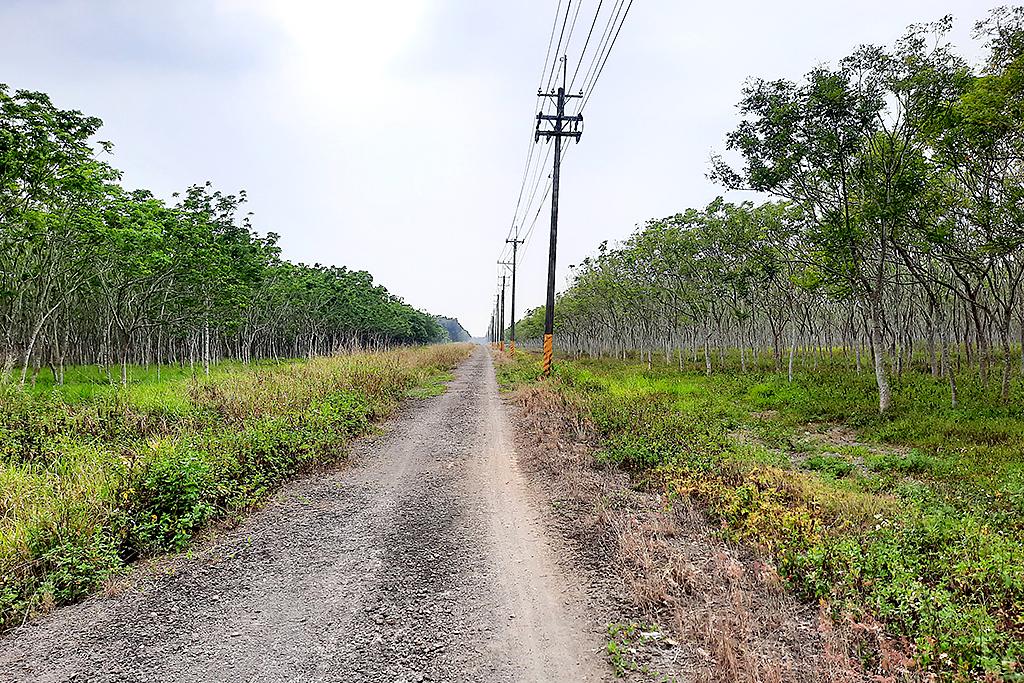
Photo: Steven Crook
The 1,005 hectares of Linhousilin Forest Park lie east of Chaojhou (潮州), just a few kilometers from the foothills at the base of the Central Mountain Range. During the past 400 years, various ethnic groups have settled hereabouts, among them Makatao (馬卡道) Aborigines, Hoklo migrants from 1635 onward, and then Hakka families a few decades later.
The forests that covered the plain hundreds of years ago were gradually cleared. During the 20th century, much of the cultivated land was switched between rice and sugar, depending on commodity prices and the priorities of Taiwan’s rulers.
From Chaoyi Road (潮義路), the forest — which opened to the public in 2014 — looks more like a city park than a true woodland. In a decade or two, the canopy will be thicker, but I don’t expect it’ll resemble a true wilderness because the trees are evenly spaced.
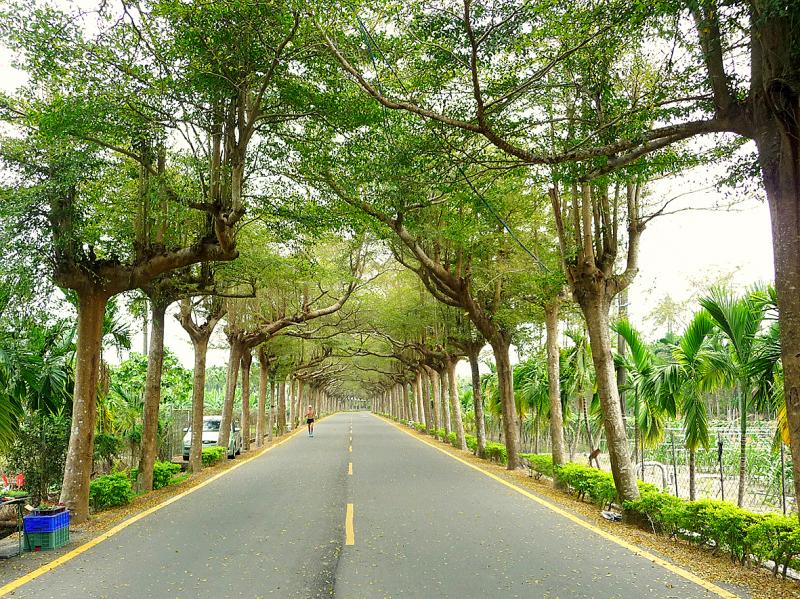
Photo: Steven Crook
Recreation and education are among the primary goals of the three lowland forest parks. At Linhousilin, areas demonstrate farming, irrigation, and soil improvement techniques. I found the ecological pond especially interesting.
I already knew that shell-ginger leaves are used to wrap various foods, including glutinous rice dumplings (zongzi, 粽子) and the Paiwan community’s cinavu. The latter, if you’ve never eaten it, is a tube of meat and taro paste. But before reading a bilingual information panel, I didn’t know that shell-ginger seeds can be made into a throat-soothing decoction.
Various dragonflies buzzed around the pond, and I discovered from another panel that these beautiful insects help keep mosquito populations in check, because they eat these pests during both the larval and flying stages of their lives. The moment I read that, I felt it’s something I should have learned a long time ago.
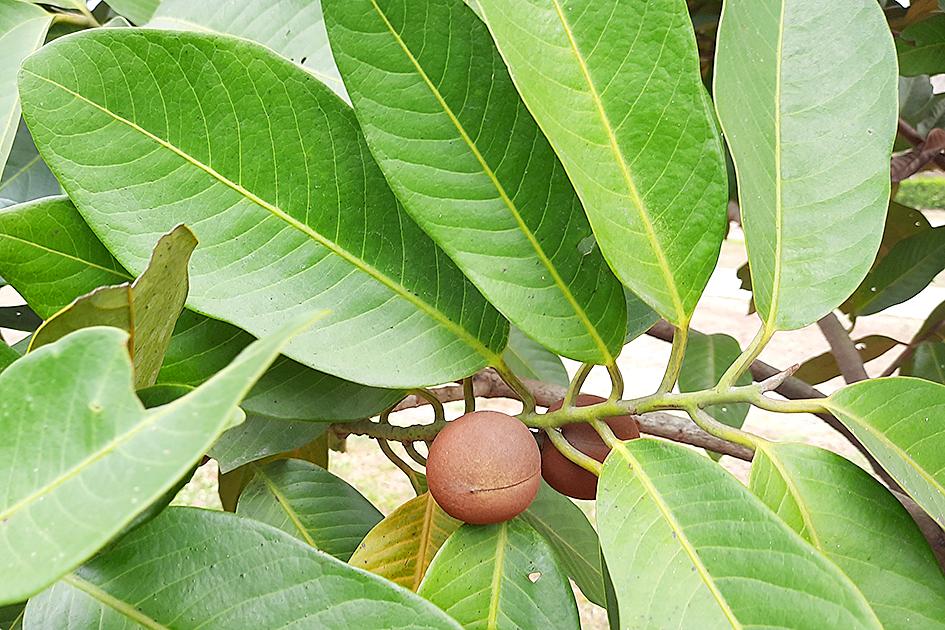
Photo: Steven Crook
If you don’t go to Linhousilin Forest Park by bicycle, as I did, consider borrowing one when you arrive so you can see much more of the park. Bikes can be rented at the visitor center for NT$100 for the first hour, NT$50 for the second and subsequent hours.
Inside the visitor center, Chinese-language displays explore climate change, carbon sequestration and forest management.
With a bicycle, or a good pair of legs, it’s possible to explore beyond the formal boundaries of the park, which is surrounded by rectangles of land given over to watermelon cultivation or reforestation projects.
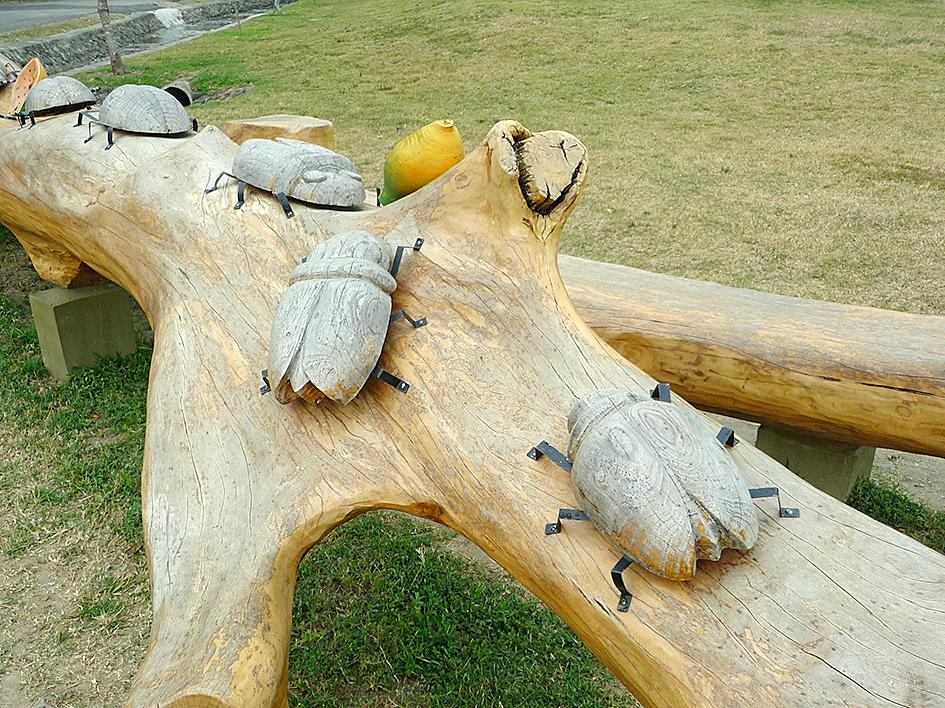
Photo: Steven Crook
I didn’t see a soul as I cycled slowly along the service roads. On some plots, every scrap of ground surrounding the trees was covered by understory. In other places, presumably for good reasons, almost everything except the trees themselves had been cleared.
CHAOLIN TEMPLE
Leaving the park by heading south and then west, I made my way to Chaolin Temple (朝林宮), which was founded in the 1850s. The temple is on Tongchao 1st Lane (通潮一巷) in Silin Borough (泗林里).
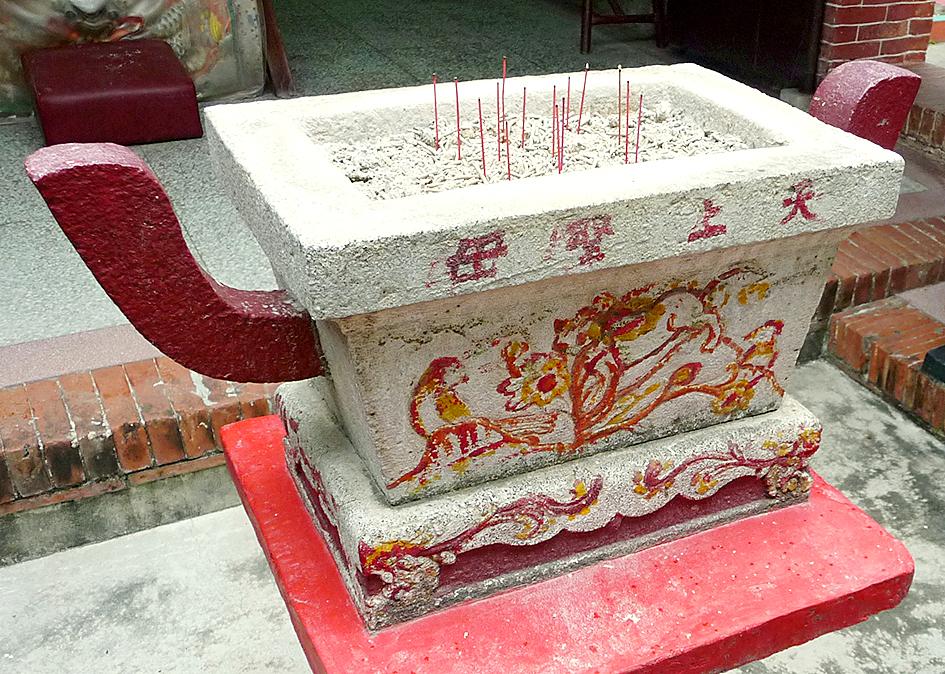
Photo: Steven Crook
It’s an attractive shrine, and the story behind it is memorable. A farmer surnamed Chen (陳) worshipped an icon of Prince Taizi (太子) in his home, and donated a plot of land so a proper temple could be built. He hesitated, however, when a fengshui master advised him that, if a shrine were constructed there, it would imperil his descendents.
Prince Taizi himself backed the temple proposal. Some years after the land had been set aside, soon after the fengshui master had died, the deity began to appear in dreams to another member of the Chen clan. The prince warned that, because the temple hadn’t been built, the village would endure torrential rains.
Soon enough it was pouring down, and the village was flooded. The fengshui master’s coffin — it’s not clear whether he’d already been buried or not — was washed into a large pond. At first, the coffin floated. It’s said to have completed three circuits of the pond before sinking without trace. In traditional Han thinking, this is one of the worst fates that can befall a person after death.
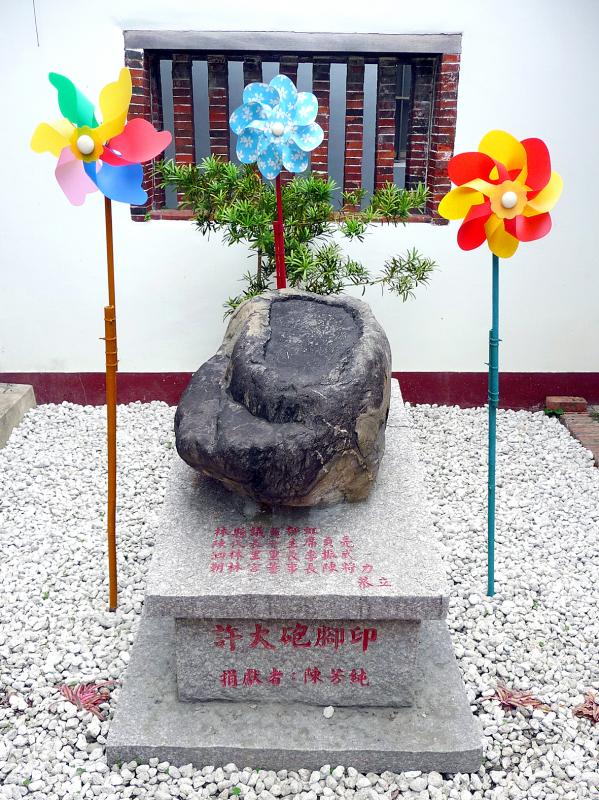
Photo: Steven Crook
The temple also displays the Hsu Ta-pao Footprint (許大砲腳印), a stone with a footprint-like indentation, apparently left by a giant-like man whose behavior alternated between the heroic and the embarrassing.
Before riding back to Chaojhou Railway Station, there was one more sight I wanted to see: Silin Walking Trail (泗林健走步道), sometimes called Chaojhou Green Tunnel (潮州綠色隧道). The 1.2km-long road near the intersection of Highway 1 and Pingtung Local Road 110 is shaded by almost 500 mature Madagascar almond trees.
Arriving just after four o’clock on a weekday, I shared the road with a few joggers and pedestrians. On weekends, it surely gets crowded — and I don’t need a deity to appear in my dreams to convince me of that.
Steven Crook has been writing about travel, culture, and business in Taiwan since 1996. He is the co-author of A Culinary History of Taipei: Beyond Pork and Ponlai, and author of Taiwan: The Bradt Travel Guide, the third edition of which has just been published.

In the March 9 edition of the Taipei Times a piece by Ninon Godefroy ran with the headine “The quiet, gentle rhythm of Taiwan.” It started with the line “Taiwan is a small, humble place. There is no Eiffel Tower, no pyramids — no singular attraction that draws the world’s attention.” I laughed out loud at that. This was out of no disrespect for the author or the piece, which made some interesting analogies and good points about how both Din Tai Fung’s and Taiwan Semiconductor Manufacturing Co’s (TSMC, 台積電) meticulous attention to detail and quality are not quite up to

April 21 to April 27 Hsieh Er’s (謝娥) political fortunes were rising fast after she got out of jail and joined the Chinese Nationalist Party (KMT) in December 1945. Not only did she hold key positions in various committees, she was elected the only woman on the Taipei City Council and headed to Nanjing in 1946 as the sole Taiwanese female representative to the National Constituent Assembly. With the support of first lady Soong May-ling (宋美齡), she started the Taipei Women’s Association and Taiwan Provincial Women’s Association, where she

It is one of the more remarkable facts of Taiwan history that it was never occupied or claimed by any of the numerous kingdoms of southern China — Han or otherwise — that lay just across the water from it. None of their brilliant ministers ever discovered that Taiwan was a “core interest” of the state whose annexation was “inevitable.” As Paul Kua notes in an excellent monograph laying out how the Portuguese gave Taiwan the name “Formosa,” the first Europeans to express an interest in occupying Taiwan were the Spanish. Tonio Andrade in his seminal work, How Taiwan Became Chinese,

Mongolian influencer Anudari Daarya looks effortlessly glamorous and carefree in her social media posts — but the classically trained pianist’s road to acceptance as a transgender artist has been anything but easy. She is one of a growing number of Mongolian LGBTQ youth challenging stereotypes and fighting for acceptance through media representation in the socially conservative country. LGBTQ Mongolians often hide their identities from their employers and colleagues for fear of discrimination, with a survey by the non-profit LGBT Centre Mongolia showing that only 20 percent of people felt comfortable coming out at work. Daarya, 25, said she has faced discrimination since she